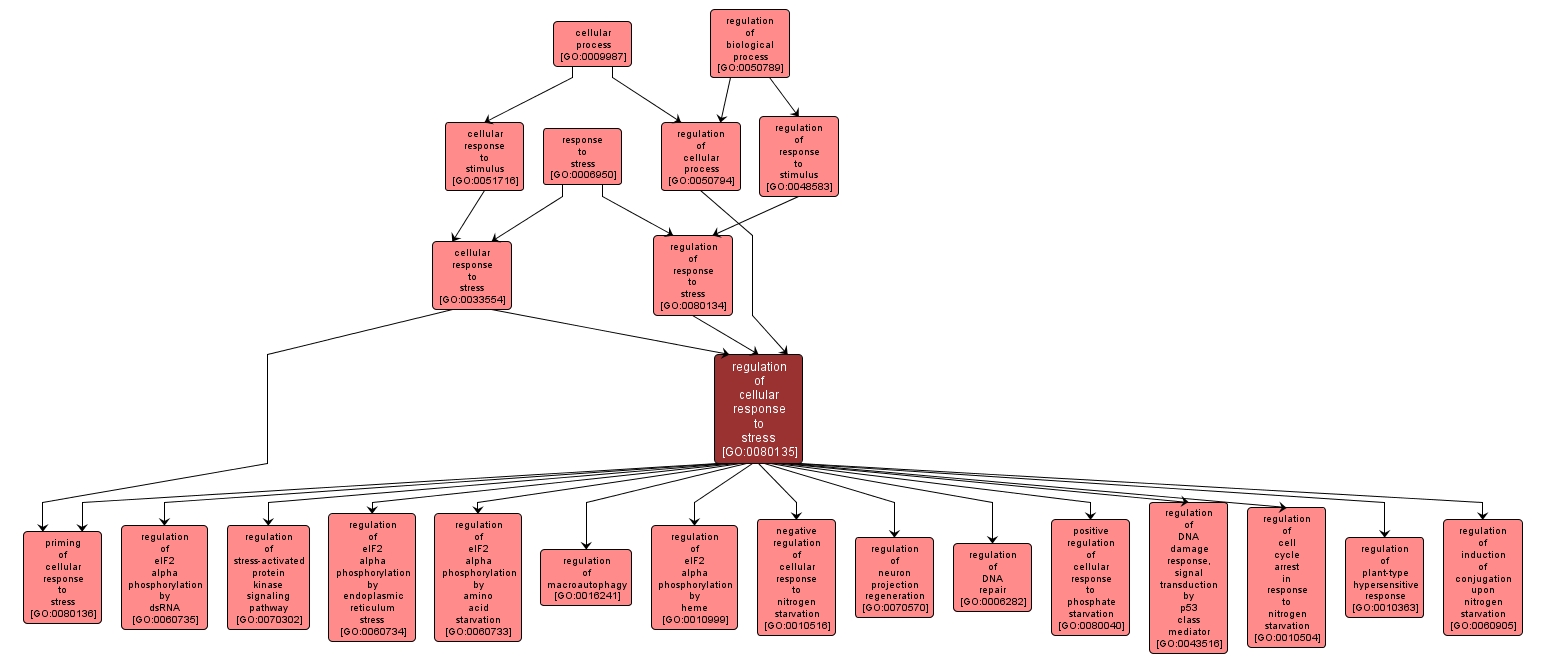| Desc: |
Any process that modulates the frequency, rate or extent of a cellular response to stress. Cellular response to stress is a change in state or activity of a cell (in terms of movement, secretion, enzyme production, gene expression, etc.) as a result of a stimulus indicating the organism is under stress. The stress is usually, but not necessarily, exogenous (e.g. temperature, humidity, ionizing radiation). |














